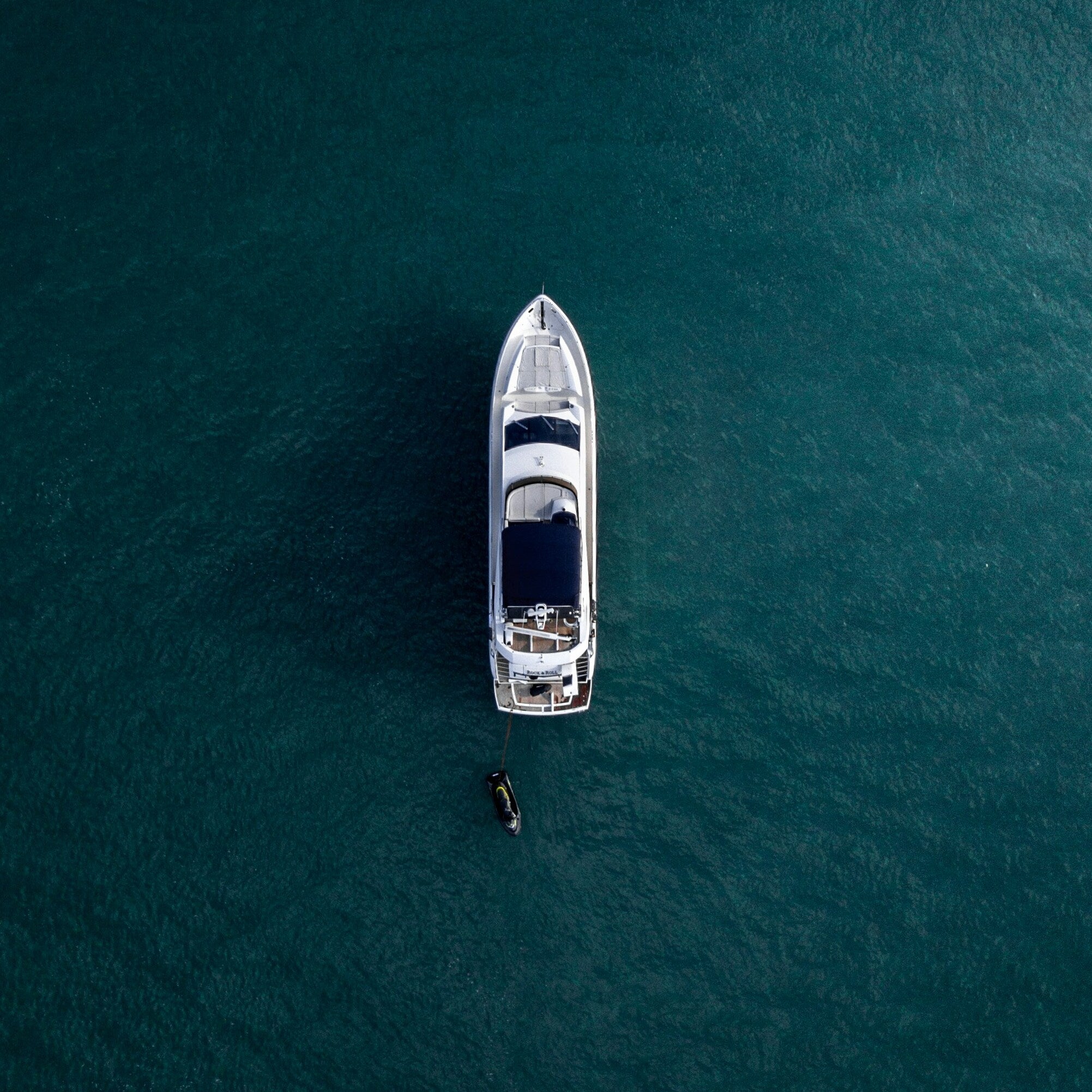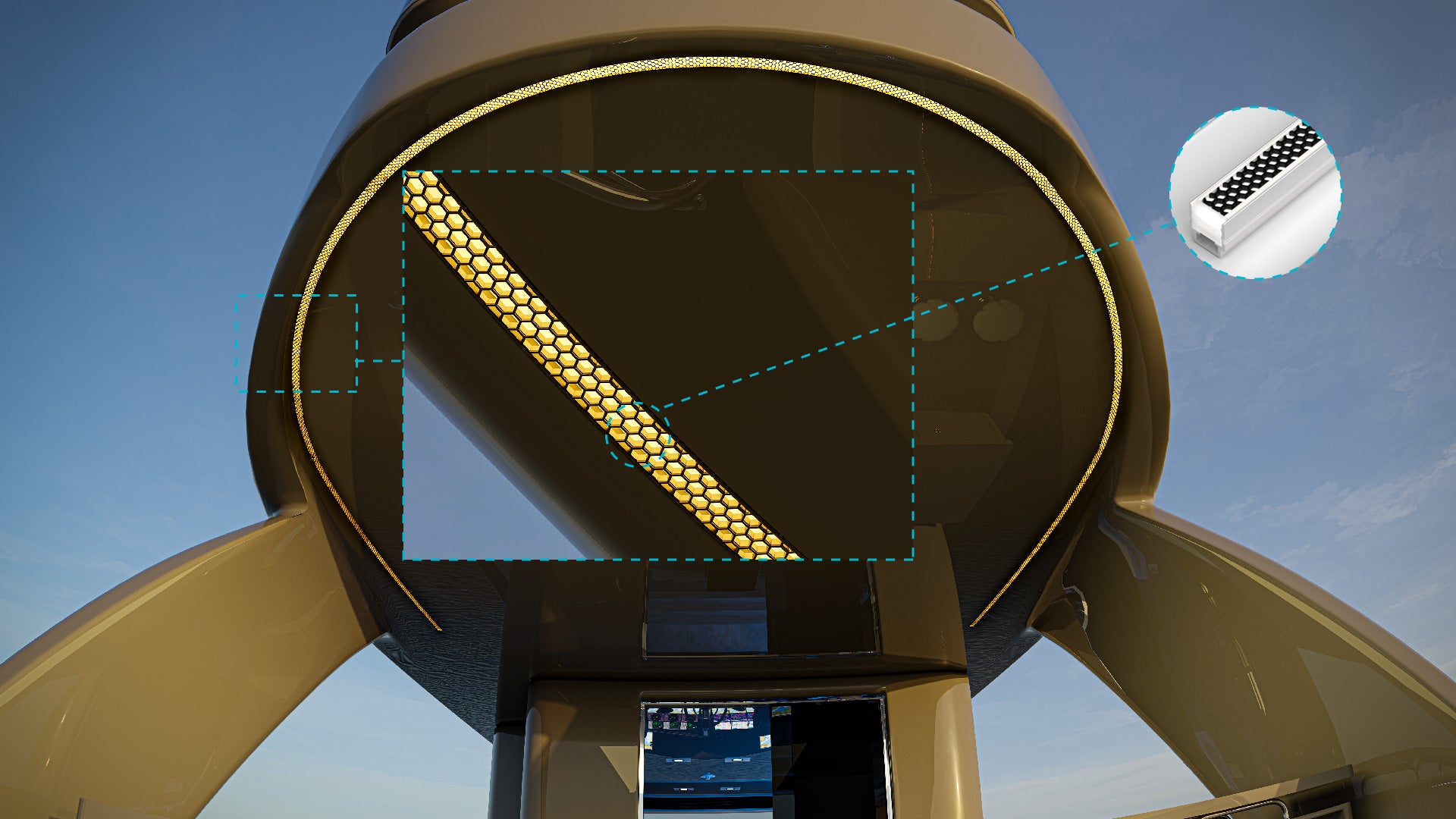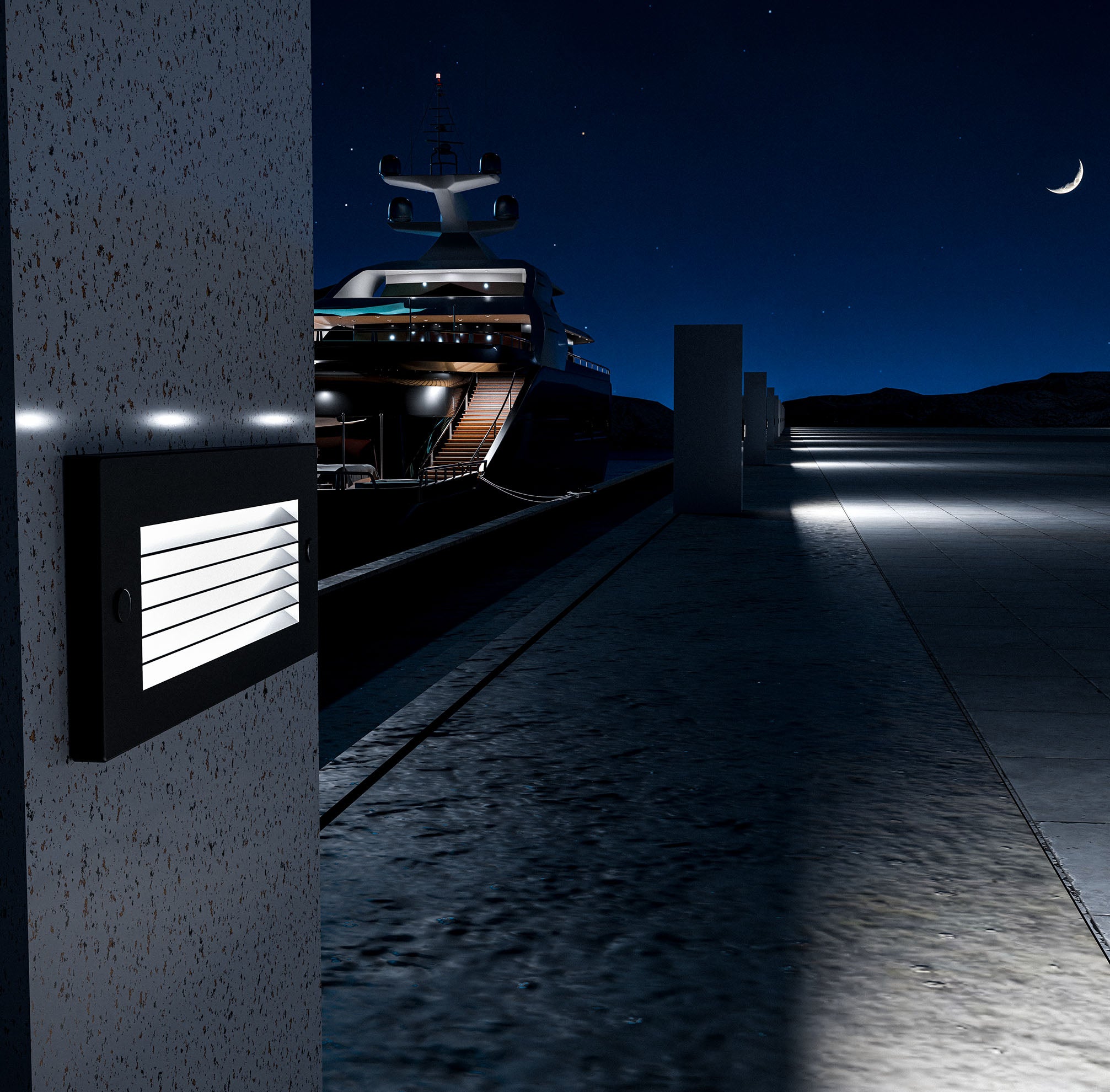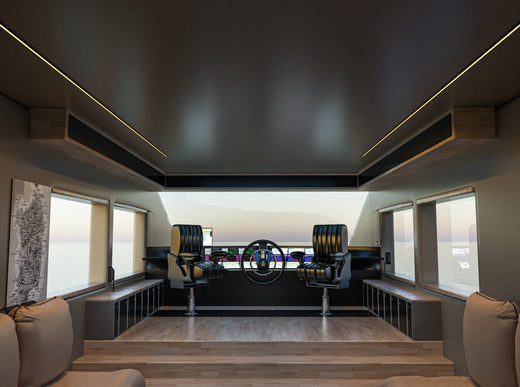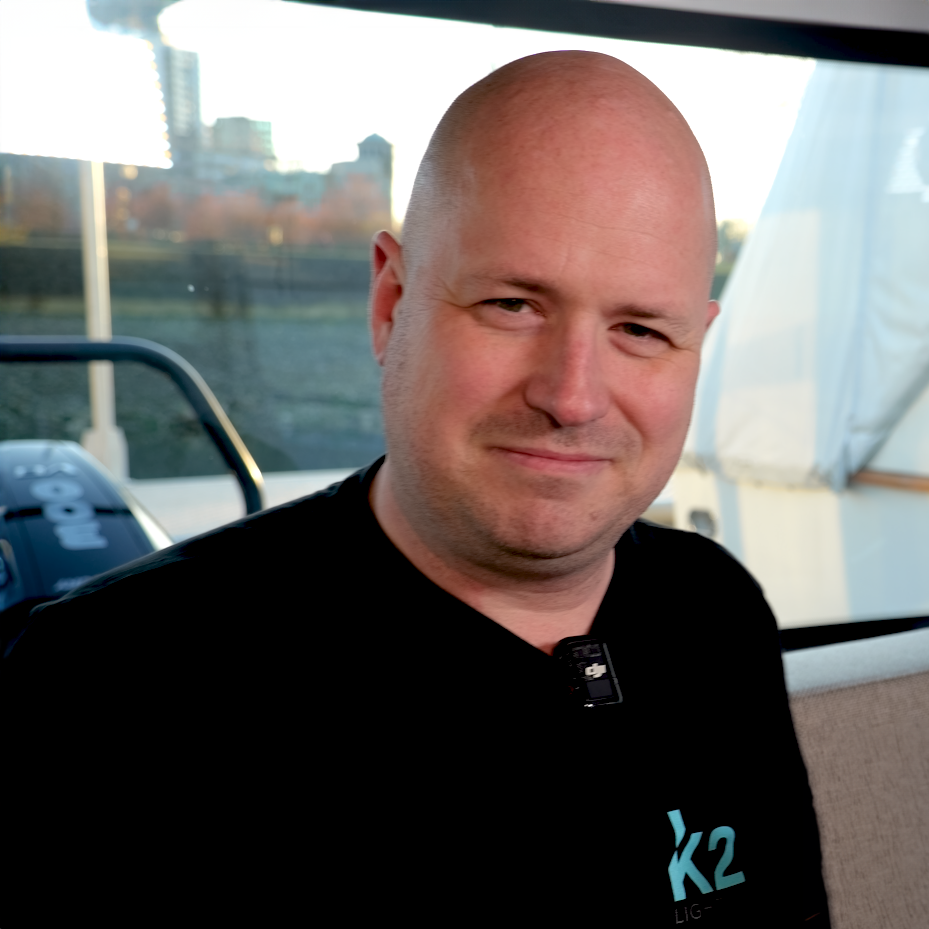Energy efficiency has become a central focus in the marine industry as fuel costs rise, environmental regulations tighten, and boat owners seek sustainable ways to extend their time on the water. One of the most effective upgrades for reducing energy consumption on a boat is switching to marine-grade LED lighting. Unlike traditional halogen or incandescent bulbs, LEDs use significantly less power, produce less heat, and offer superior brightness, making them the go-to choice for modern boats.
In this blog, we’ll explore why energy efficiency is vital for marine environments, break down the benefits of LED lighting, and provide actionable tips on optimizing your boat’s lighting systems. Whether you’re preparing for long voyages, anchoring overnight, or simply looking to reduce energy costs, LED lighting offers practical, reliable solutions that align with the evolving demands of modern boating.
Why Energy Efficiency Matters on Boats
Limited Power Resources on Boats
Boats operate in self-contained power ecosystems, relying on batteries, alternators, or onboard generators for electricity. Unlike homes connected to a continuous power grid, boats have limited energy reserves, and every watt counts. Traditional lighting systems, such as halogen bulbs, place a heavy strain on these reserves, often requiring generators to run more frequently, consuming fuel and adding noise pollution.
Switching to LED lighting significantly reduces this power demand, allowing batteries to last longer and minimizing the need for frequent generator use. This is especially valuable during long trips, night voyages, or when anchored in remote locations where shore power isn’t available. Energy efficiency isn’t just about cost savings; it’s about extending operational flexibility and reducing reliance on backup systems.
Cost Savings Over Time
Energy efficiency directly impacts operating costs, and marine lighting is no exception. While the upfront investment for high-quality marine-grade LED lights might be higher than traditional bulbs, the long-term savings are undeniable. LEDs consume up to 80% less power than incandescent bulbs, and their extended lifespan—often exceeding 50,000 hours—means fewer replacements and lower maintenance costs.
Over time, reduced fuel usage, longer battery life, and minimal maintenance requirements add up to substantial savings. For commercial vessel operators, fishing fleets, or long-distance cruisers, these savings can be transformative, freeing up budgets for other essential upgrades or operational needs.
Environmental Responsibility
Environmental sustainability is becoming increasingly important in the boating industry, driven by both regulatory requirements and a collective push toward cleaner practices. Energy-efficient lighting plays a significant role in reducing carbon emissions and lowering the environmental impact of marine activities.
LED lights consume less power and, therefore, reduce the frequency of generator operation, lowering greenhouse gas emissions. Additionally, their longer lifespan reduces waste associated with frequent bulb replacements. Switching to LEDs is a practical step toward responsible boating, aligning with eco-conscious initiatives without compromising functionality or safety.
The Energy-Saving Benefits of Marine LED Lighting
Low Power Consumption
Marine LED lights are engineered for maximum efficiency, consuming far less energy than incandescent or halogen bulbs while producing the same—or often better—levels of brightness. This efficiency is particularly important on boats, where conserving power directly impacts the vessel's operational capabilities.
For example, a standard incandescent bulb might draw 50 watts, while an equivalent LED bulb uses just 10 watts to achieve the same illumination. On larger vessels with multiple lighting zones, these savings accumulate quickly, extending battery runtime and reducing generator fuel costs.
Longer Lifespan and Reduced Maintenance
LED lights are known for their durability and extended operational life, with some fixtures rated for over 50,000 hours of use. In comparison, traditional bulbs often burn out after only a few hundred hours. This extended lifespan reduces the frequency of replacements, which is especially valuable in hard-to-reach areas like masthead lights, engine rooms, or underwater fixtures.
Fewer replacements not only save money but also reduce the labor and inconvenience associated with changing bulbs, particularly during voyages. Maintenance crews and boat owners can focus on other essential tasks without worrying about frequent lighting failures.
Efficient Heat Management
Unlike incandescent bulbs, which waste a significant portion of their energy as heat, LEDs are incredibly efficient at converting energy into light. This means they generate very little heat, reducing the risk of overheating in enclosed spaces like cabins, engine rooms, or storage compartments.
Lower heat emissions also contribute to better onboard climate control, as cooling systems and air conditioning units don’t need to compensate for excessive heat from light fixtures. This indirect energy savings further enhances the overall efficiency of the vessel’s electrical system.
Key Areas to Optimize Energy Savings with LED Lighting
Navigation Lights
Navigation lights are essential for safety, providing visibility and compliance with maritime regulations during nighttime voyages or low-visibility conditions. Traditional navigation lights are notorious for their high power draw and frequent bulb replacements, but LEDs offer a more reliable and energy-efficient alternative.
Modern marine-grade LED navigation lights consume a fraction of the power while providing brighter, more focused beams that ensure visibility from greater distances. These lights are also designed to withstand harsh weather conditions, reducing the need for replacements or repairs.
Cabin and Interior Lights
Cabin and interior spaces are often overlooked when it comes to energy efficiency, but they represent a significant portion of onboard power usage. LED cabin lights not only reduce power draw but also offer versatility through adjustable brightness settings and dimming capabilities.
Boat owners can optimize cabin lighting by installing energy-efficient LED fixtures in sleeping areas, kitchens, and common spaces. Dimmable LEDs provide flexibility, allowing lights to operate at reduced power levels when full brightness isn’t necessary.
Deck and Outdoor Lighting
Outdoor lighting, including deck lights, rail lights, and floodlights, plays a crucial role in onboard safety and functionality. Traditional floodlights consume significant power and often generate excessive heat, but LED alternatives provide bright, focused illumination with minimal energy draw.
Strip lights along pathways and handrails enhance safety without creating excessive glare. With weatherproof and waterproof designs, LED outdoor fixtures are durable and energy-efficient, even in challenging marine conditions.
Underwater Lights
Underwater LED lights are growing in popularity, adding aesthetic appeal and functionality for nighttime fishing or anchoring in low-light conditions. Modern LED underwater lights are designed to operate efficiently while submerged, consuming minimal power compared to traditional alternatives.
Many LED underwater fixtures also come with motion sensors or automated controls, ensuring they’re only active when needed. This eliminates unnecessary power drain and further optimizes energy usage.
Smart LED Lighting Systems for Energy Efficiency
Automation and Smart Controls
The integration of smart lighting systems on boats has revolutionized how energy consumption is managed. Modern marine LED systems can now be controlled through mobile apps, centralized control panels, or even voice-activated assistants. Automation features allow boat owners to schedule lighting zones, turn lights on and off remotely, and set timers to ensure lights aren’t accidentally left on for extended periods.
For example, deck lights can be programmed to activate at sunset and turn off automatically at sunrise, reducing unnecessary power usage. Similarly, cabin lights can be set to dim during specific hours to conserve energy while still maintaining enough illumination for basic tasks. These automated systems optimize power consumption by preventing human error and minimizing energy waste across the vessel.
Motion Sensors for Zoned Lighting
Motion sensors add another layer of efficiency by ensuring lights are only active when needed. Installed in high-traffic areas like cabins, corridors, or engine rooms, these sensors automatically activate lights when movement is detected and switch them off after a set period of inactivity. This feature is particularly valuable in spaces that are used intermittently, as it eliminates the common problem of lights being accidentally left on.
Motion-activated LEDs are especially effective in storage compartments, heads (bathrooms), and exterior stairways, where manual switches are often overlooked. This targeted illumination saves power without compromising convenience or safety.
Dimmable LED Fixtures
Dimmable LED lights offer flexibility in managing energy consumption while also enhancing comfort and ambiance. By adjusting light intensity based on the task at hand, boat owners can reduce unnecessary power usage in situations where full brightness isn’t required. For example, cabin lights can be dimmed during evening relaxation, and deck lights can be adjusted to a softer glow during quiet anchor nights.
This level of customization not only extends battery life but also contributes to a more pleasant onboard experience. In high-usage areas like salons and cabins, dimmable LED fixtures can significantly lower overall energy demand without sacrificing functionality.
Choosing the Right Marine-Grade LED Lights for Maximum Efficiency
Understand IP Ratings and Weatherproofing
When selecting marine-grade LED lights, understanding IP (Ingress Protection) ratings is crucial. These ratings indicate a light fixture's ability to withstand water, dust, and environmental factors. For marine environments, IP67 and IP68-rated lights are the gold standard, offering complete protection against water ingress and prolonged submersion.
Waterproof and weatherproof lighting fixtures are essential for outdoor and underwater applications, where exposure to saltwater, rain, and high humidity is inevitable. Investing in properly rated lights prevents premature failure, reducing replacement costs and ensuring long-term energy efficiency.
Select the Right Color Temperature
Color temperature, measured in Kelvins (K), determines the warmth or coolness of LED light. Choosing the right color temperature is not only about aesthetics but also about optimizing energy efficiency. Warm white LEDs (2700K-3000K) are ideal for creating a cozy atmosphere in cabins and relaxation areas, while cool white LEDs (4000K-5000K) are better suited for task lighting in workspaces, engine rooms, and outdoor decks.
Understanding the functional requirements of each area allows boat owners to make informed lighting choices, ensuring every fixture contributes to both visibility and energy savings.
Evaluate Lumen Output and Wattage
Lumen output indicates the brightness of an LED light, while wattage reflects the energy it consumes. Selecting fixtures with the right balance between lumens and watts ensures you’re not over-lighting spaces or wasting energy. For example, high-lumen floodlights are best for decks and work areas, while lower-lumen LEDs can effectively illuminate cabins and walkways.
Opting for adjustable fixtures with multiple brightness levels also allows for energy conservation during low-light tasks while maintaining the option for maximum brightness when needed.
Solar-Powered LED Lighting Solutions
Benefits of Solar Integration on Boats
Solar-powered LED lighting systems are becoming an increasingly popular choice for boat owners seeking energy independence. These systems harness energy from the sun during the day, storing it in onboard batteries to power lights at night. This reduces reliance on onboard generators and shore power, leading to substantial fuel savings and lower operational costs.
Solar LED lights are particularly useful for deck lighting, navigation lights, and dockside illumination, where they can be positioned for maximum sun exposure.
Ideal Scenarios for Solar LED Lighting
Solar-powered LEDs are most effective on boats frequently anchored in sunny climates or during extended stays in marinas with ample sunlight. They are excellent for outdoor lighting applications, such as deck floodlights, step lights, and perimeter security lighting.
However, it’s important to ensure proper placement and angle of solar panels to maximize energy absorption throughout the day. Regular cleaning and maintenance of solar panels also play a role in optimizing efficiency.
Balancing Solar and Battery Power
While solar energy is a fantastic renewable resource, it’s not always consistent due to weather variability. Hybrid lighting systems that combine solar power with battery backup provide a reliable solution for uninterrupted lighting performance. These systems automatically switch to battery reserves when solar energy is insufficient, ensuring constant illumination regardless of environmental conditions.
Practical Tips for Reducing Energy Use with LED Lighting
Regular Maintenance for Optimal Efficiency
Even the most energy-efficient LED lighting systems require regular maintenance to perform at their best. Dust, salt residue, and moisture can accumulate on fixtures, reducing brightness and efficiency. Regular cleaning and inspection of lighting systems, connectors, and seals help prevent these issues.
It’s also important to check for corrosion or damage to wiring and ensure connections remain secure. Preventative maintenance extends the lifespan of LED lights while maintaining their energy-saving capabilities.
Use Lighting Zones Effectively
Dividing your boat into lighting zones—such as cabins, decks, and engine rooms—allows for better control over energy usage. For example, lights in frequently used areas can remain active while less-used zones remain switched off or dimmed.
Using separate switches or smart controls for each zone minimizes energy waste and allows for customized lighting schedules based on activity levels.
Leverage Natural Light During the Day
Natural light is one of the most overlooked resources on boats. During daylight hours, hatches, windows, and skylights can reduce reliance on artificial lighting. Maximizing natural light exposure in workspaces and living areas significantly reduces power draw from onboard lighting systems.
Boat owners can also consider installing translucent hatches or reflective surfaces to amplify natural light and make interior spaces feel brighter during the day.
Common Mistakes to Avoid When Upgrading to LED Lighting
Choosing the Wrong Fixtures for the Wrong Areas
One of the most common mistakes is using indoor LED fixtures in outdoor or underwater environments. Marine-grade LEDs are specifically designed to withstand moisture, salt, and UV exposure, making them a must for exterior and underwater applications.
Over-Lighting Spaces
Excessive brightness not only wastes energy but also creates an uncomfortable atmosphere. Choosing the correct lumen output and incorporating dimmable fixtures prevents unnecessary power consumption.
Ignoring Compatibility with Existing Power Systems
When upgrading to LED lighting, it’s essential to ensure compatibility with your boat's existing electrical system. Mismatched voltage or incompatible wiring can reduce efficiency and even cause damage.
Reducing energy consumption on your boat is not just about saving money—it’s about enhancing efficiency, extending battery life, and contributing to a more sustainable marine ecosystem. Marine-grade LED lighting stands out as one of the smartest investments you can make in 2025, offering superior energy efficiency, durability, and functionality.
Explore K2 Lighting's wide range of marine-grade LED lighting solutions and start saving energy on every voyage.

